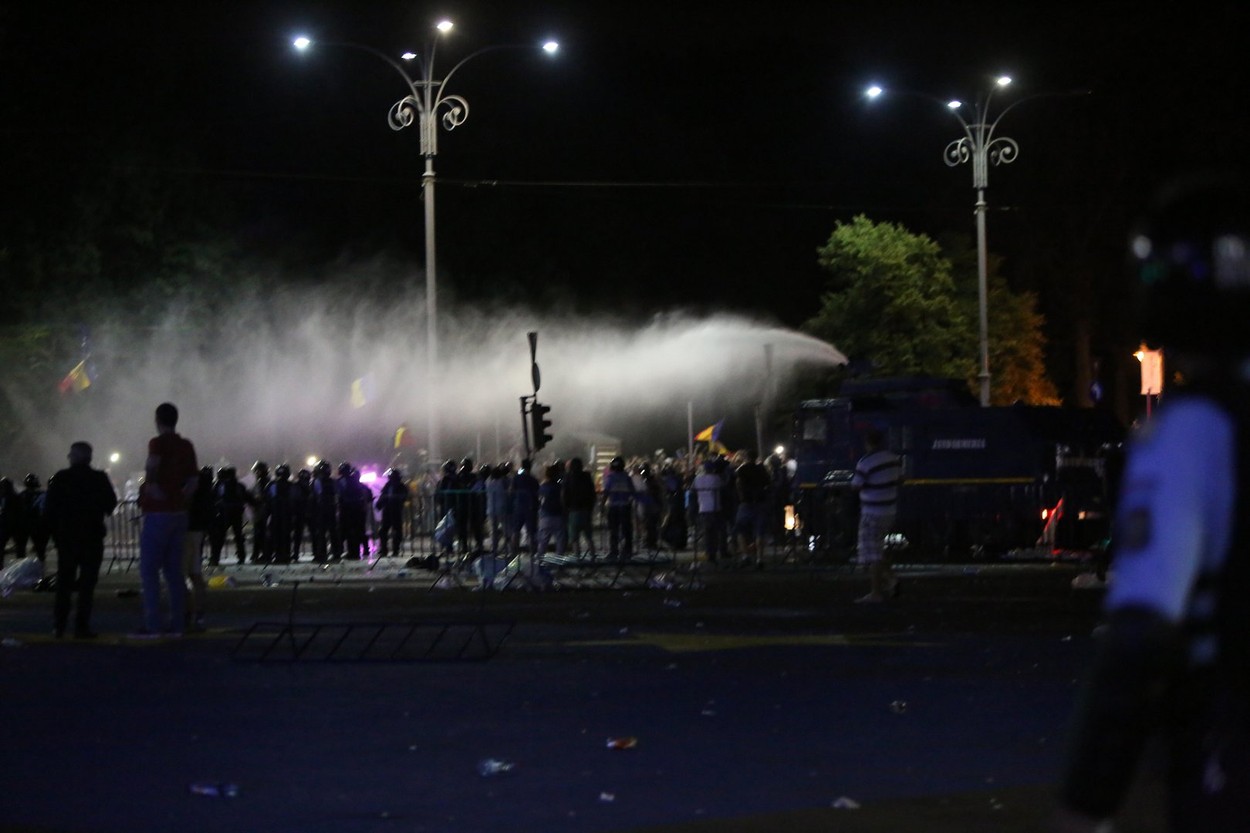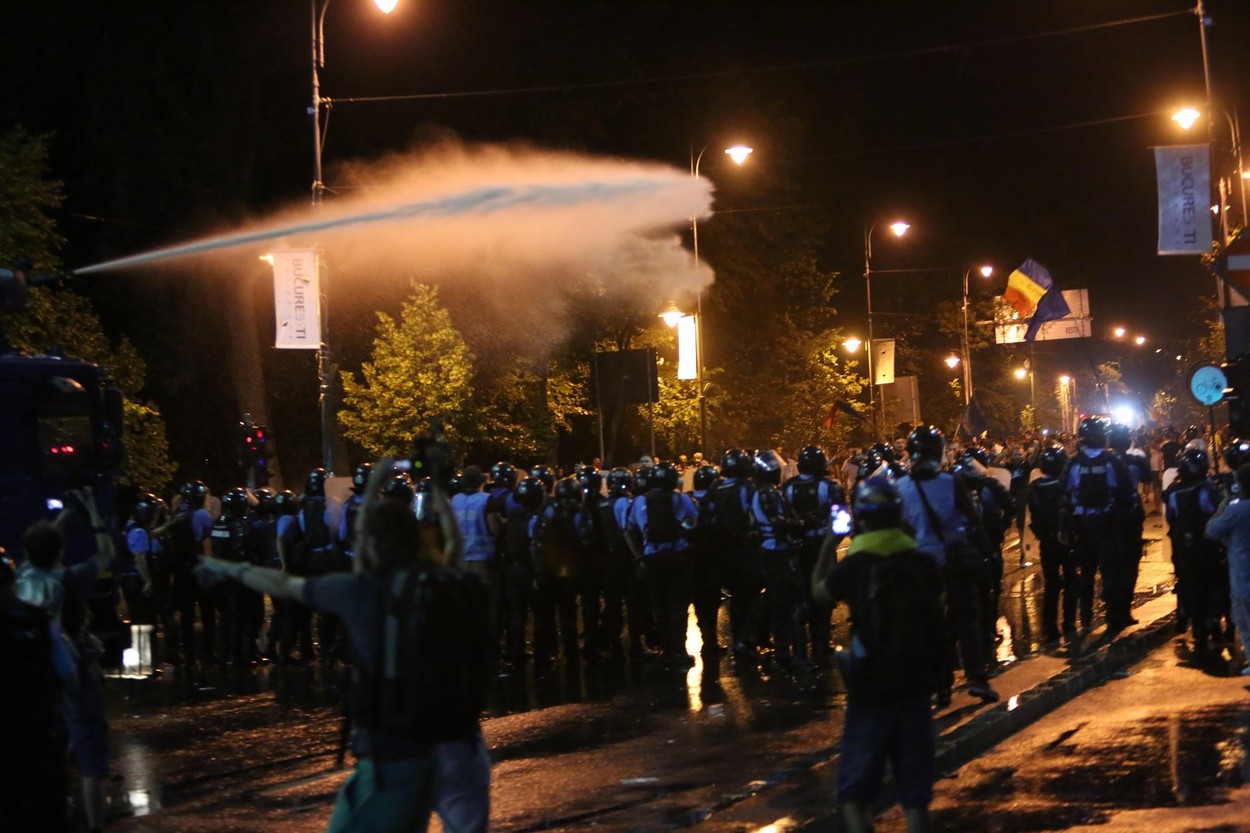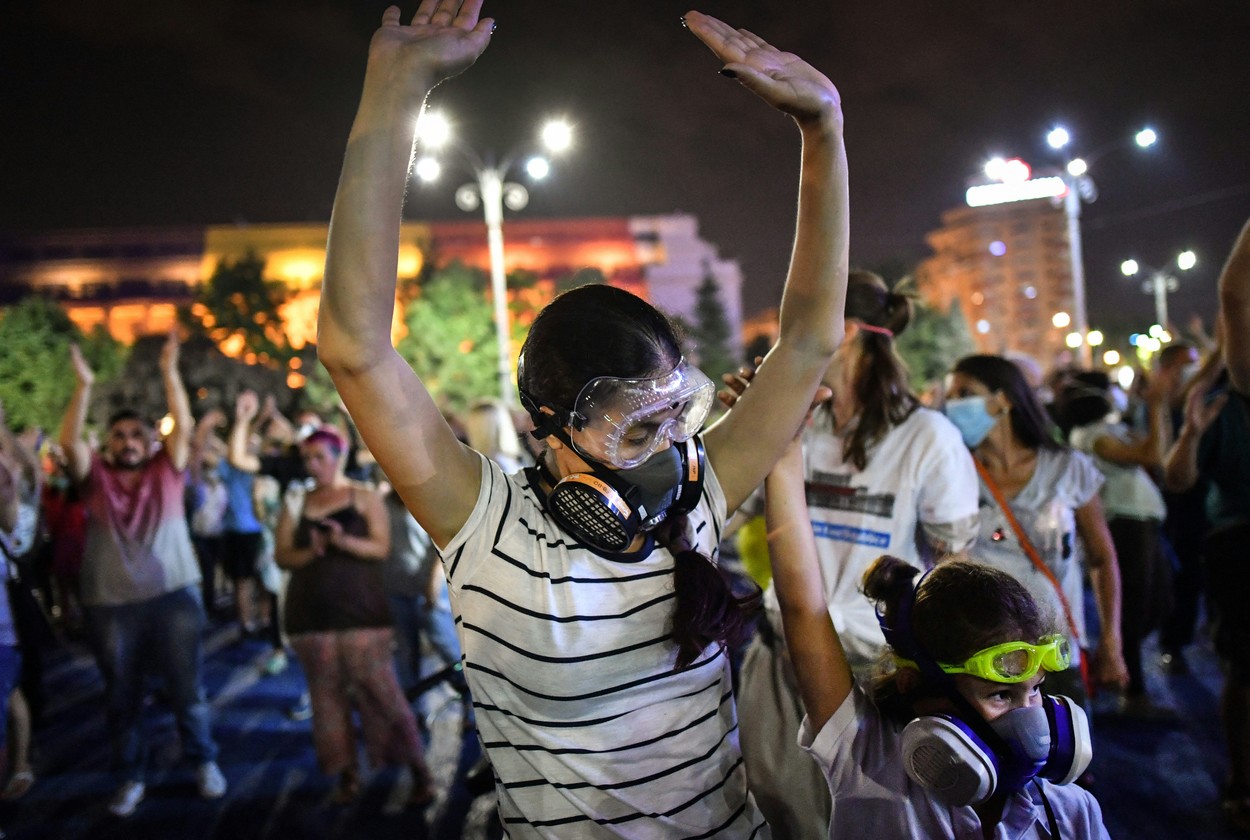
August 10, 2018: About 100,000 people gathered in Piața Victoriei in an attempt to stop PSD’s attack on the judiciary. A demonstration against the government of Viorica Denchile, which ended with tear gas and water cannons by the gendarmes. More than 700 people filed criminal complaints after being hit by gendarmes or inhaling tear gas. Who is responsible for these violence? Answers were awaited for four years, during which criminal cases passed between prosecutors’ offices and courts.
Opened in 2018, evaluated by DIICOT in 2020 and reopened this spring after an appeal by protesters – this was, in short, the course of the case on August 10, one of the biggest failures of justice in Romania.

Attorney General Gabriela Scutea said a week ago that she could not postpone the deadline for the case, especially since it was also a court vacation.
Timeline of files August 10 – investigation, killed by DIICOT
Opened on August 11, 2018 by the Prosecutor’s Office of the Bucharest Military Court following complaints filed by hundreds of people who suffered after a brutal intervention by the gendarmerie, the August 10 file has been wandering between prosecutors’ offices and courts for almost four years. .

On June 28, 2019, the General Prosecutor’s Office announced that the prosecutors of the Military Prosecutor’s Office had decided to withdraw the case from August 10 to DIICOT to continue the investigation into the organization, management and intervention of law enforcement agencies. forces of the General Inspection of the Gendarmerie of Romania against the demonstrators, respectively, regarding “the purpose of the actions of some groups of people who on August 10, 2018 committed violent actions against law enforcement agencies, and the degree to which these actions, by the extent and the way they were carried out, could threaten the national security”.
DIICOT already had a case opened as a result of a report filed in September 2018 by the gendarmerie alleging crimes against the constitutional order, alleging a coup d’état by demonstrators.
Also, in the proceedings of the military prosecutor’s office, there was a criminal proceeding against the leaders of the gendarmerie, who coordinated the actions of the gendarmes. These are Colonel Ionuţ Cătălin Sindile, Head of the Gendarmerie of Romania, Colonel Gheorghe Sebastian Cucoş, First Deputy of the Gendarmerie of Romania, Major Laurenciu Kazan, Director General of the General Directorate of the Gendarmerie of Bucharest and State Secretary Dan Kirik.

“Moral complicity of peaceful protesters”
On July 15, 2020, DIICOT prosecutors partially closed the August 10 case.
Thus, Colonel Gheorghe Sebastian Cucosh, former First Deputy of the Romanian Gendarmerie, Major Laurenciu Kazan, former Director General of the General Directorate of the Bucharest Gendarmerie, Colonel Catalin Sindile, former head of the Romanian Gendarmerie and Chief Commissioner of Police Mihai Dan Kirike, escaped criminal prosecution ., former State Secretary at the MAI for relations with prefects.
DIICOT argued that the suppression of the protest would not have been prepared in time, as claimed by some of the demonstrators who filed criminal complaints against the gendarmes. Therefore, the then leadership of the Gendarmerie was removed from criminal prosecution.
Prosecutor Doru Stojka in the motion order referred to the authorities’ “sincere faith” in law enforcement and the moral complicity of the peaceful protesters in Victory Square, who were not limited to those who used violence against law enforcement authorities, but even they Prosecutor Doru Stojka also claimed in the order to classification that not all “collateral victims” of the violence on Victory Square were also “innocent victims”.
“The gendarmes’ attempt to remove the rioters from the crowd failed mainly because of the protestors’ position, which was considered peaceful,” the prosecutor who closed the case also revealed.
On August 4, 2020, the former Chief Prosecutor of DIICOT, Georgiana Josu, partially revoked the decision of August 10 and ordered the reopening of the criminal investigation into the case of the former heads of the Gendarmerie: Colonel Gheorghe Sebastian Kukos, Major Laurenciu Kazan, Colonel Cătălin Sindile and Police Commissioner Mihai Dan Kirika.

Georgiana Josu argued that the prosecutor who dismissed the charges against the Gendarmerie leaders did not review the evidence gathered by the Military Prosecutor’s Office and did not re-interview suspects, victims and witnesses. She also reported that the heads of the gendarmerie did not want to testify when they were summoned to the Military Prosecutor’s Office, and that they should have been summoned and heard at DIIKOT, after this structure took over the case.
Georgiana Josu was appointed to lead DIICOT in March 2020 by a decree signed by Klaus Iohannis, despite the negative opinion of the High Council of Magistrates. Gabriela Scutia was also appointed Prosecutor General by decree signed by Yohannis, also despite the negative opinion of the CSM. The post at DIICOT remained vacant in October 2019 after Felix Benile resigned at the request of Klaus Iohannis following the Caracal case. Georgiana Josu resigned as chair of DIICOT in September 2020 in the context of her husband Dan Josu being sentenced to 3 years of suspended prison in a corruption case.
Conflicting court decisions
DIICOT’s request was sent to the Bucharest Court of Appeal, and from there it reached the Bucharest Court, which postponed the decision several times.
On March 2, 2021, the Bucharest court decided that the case regarding the gendarmerie’s violent intervention in the rally on August 10, 2018 remains closed, so that the former gendarmerie leaders are not prosecuted for the intervention against the demonstrators. The decision was made by judge Daria Migets.
- DOCUMENT Justification of the decision to classify the case from August 10. Judge rejects all arguments of ex-DIICOT chief to reopen investigation against ex-gendarmerie chiefs
On April 16, 2021, the Bucharest Court of Appeal finally decided to reopen the “August 10” case against the gendarmerie leaders who coordinated the intervention in Piața Victoriei. The decision was made after an appeal filed by Ioan Kryachunianu, who was injured during the attack. More precisely, the complaint was filed by Ion Crecunescu, one of the victims after the gendarmerie intervention of demonstrators, who criticized DIICOT’s decision to close the case against the gendarmerie leadership on August 10.
At the moment, the case is in the Military Prosecutor’s Office.

In April of this year, the military prosecutor’s office reopened the criminal investigation against the former heads of the gendarmerie, Colonel Gheorghe Sebastian Cucos, the former first deputy of the Romanian gendarmerie, Major Laurenciu Kazan, the former general director of the General Directorate of the Bucharest Gendarmerie, Colonel Cătălin Sindile, the former head of the Romanian gendarmerie. They will be charged with abuse of office, wrongful participation in a continuing pattern of abuse, wrongful participation in official forgery and use of official forgery.
Chronology of the protest violently suppressed by the gendarmes
The morning of August 10, 2018 – the first protesters arrived at Victory Square for the “Diaspora rally”. At 11:00, Romanians from Italy, Spain, Germany, the USA, as well as from the provinces shouted against the PSD government. The first incidents occurred around 4:00 p.m., when a large group of demonstrators broke the encirclement of gendarmes in front of the Victoria Palace. From that moment, the gendarmes began to spray tear gas en masse.
“The situation is tense. (…) We don’t want any incidents, confrontations,” said the spokesman of the Bucharest Gendarmerie, Georgian Enache. But the tension increased. Gendarmes continued to use tear gas even against peaceful protesters, among them many women with children. By 18:00, almost 40 people needed medical assistance. Around 19:00, when there were almost 50,000 people in Victory Square, a water cannon was also brought in. The Gendarmes continued to use tear gas, and by 20:00 more than 100 people needed medical attention.
Despite the tension, people did not disperse, around 9:00 p.m. the number of demonstrators was estimated at almost 100,000. After being sprayed with tear gas, the protesters dispersed and then returned to the square. Gendarmerie spokesman Georgian Enache announced in an intervention on Digi 24 that if the situation worsens, the force will intervene. As of 10:00 p.m., more than 200 people needed medical assistance.
The moment that provoked the brutal intervention happened around 11:00 p.m., when two gendarmes, a woman and a man, were caught by the ultras, who began to beat them. Several demonstrators tried to protect them by covering them with their bodies.
At 23:10, the gendarmerie intervenes to evacuate the market. Grenades with tear gas and water cannons are used. People run to nearby boulevards, where gendarmes chase them and beat them. The whole action is coordinated by the head of the special intervention brigade of the gendarmerie, Ketalin Paraskiv – “the man in white”.
At 23:30, President Klaus Iohannis condemns the brutal intervention of the gendarmes, which he considers disproportionate. “In a true democracy, every person has the right to protest, but violence is unacceptable, regardless of political options. I strongly condemn the brutal intervention of the gendarmerie, which is totally disproportionate to the demonstrations of the majority of people in Piața Victoriei,” Iohannis wrote on Facebook.
Clashes with gendarmes continued on the streets adjacent to Victory Square. In total, more than 400 people needed medical help, and numerous videos appeared on social networks of moments in which gendarmes brutally beat protesters who raised their hands and did not show violence.

Around 00:40, the gendarmerie reported that a female gendarmerie who was beaten by hooligans was suspected of having a fracture of the cervical spine, information that later turned out to be false.
Source: Hot News RO
Robert is an experienced journalist who has been covering the automobile industry for over a decade. He has a deep understanding of the latest technologies and trends in the industry and is known for his thorough and in-depth reporting.